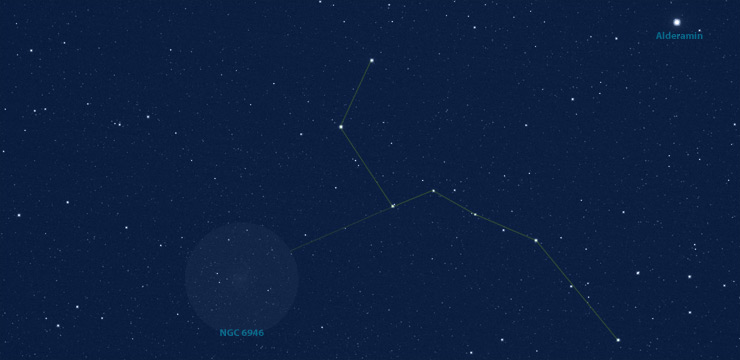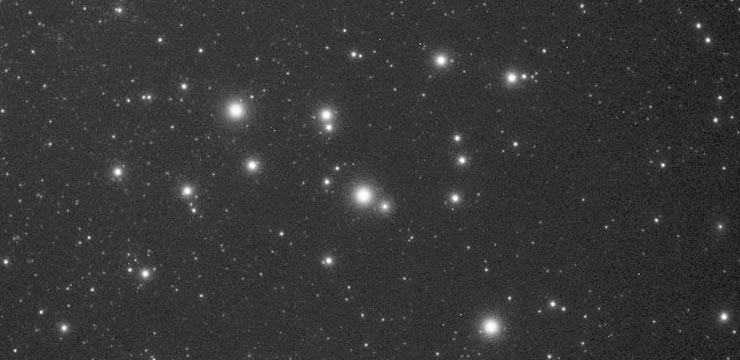
The “Little Big Dipper”
September 2010 :
Decades ago, amateur astronomical equipment was dominated by the humble 60mm long-focus achromat. Some time later, the trend migrated towards large aperture Dobsonians capable of pulling down the faintest of fuzzies. In recent years, the prevalence of high-quality, highly portable, and affordable 70-90mm ED refractors with relatively short focal lengths has brought back small scope astronomy. Advances in digital imaging make these telescopes very attractive to amateur astrophotographers, but they are also very useful as take-anywhere, quick setup (what has become known as “grab-and-go”) visual observing. In this segment I hope to bring attention to some off-the-beaten-path targets that are well-suited for these types of scopes. If you own one of the many models of 80mm ED refractors available, or have been thinking of reasons to get one, you may be interested in some simple observing projects that can be done even under moonlit or light polluted skies.
One object of interest lies within the constellation Cepheus and is well placed during late summer and early autumn evenings. Cepheus offers some very attractive targets for small telescopes, largely because of the constellation’s position in the northern Milky Way. Its numerous star clusters and nebulae, and even a bright galaxy, have been given much attention in books and magazine articles read by deep sky observers in the past. The object I want to call attention to has no catalog number that I know of, and hence has no readily available go-to shortcut for computerized scopes (you can program your go-to scope on the coordinates RA: 28h 37’ 49”, Dec: +61° 6’), so the best way to get to it is an easy star hop.
The quickest way to locate this object is to draw a line from Deneb to Polaris (see finder chart). Now look at about the 40% mark along this line to find Eta Cephei, a 3.4 magnitude star that lies about 4° to the west-southwest of magnitude 2.45 Alderamin (Alpha Cephei), which marks the southwest corner of the 5-star “house” asterism that distinguishes the main constellation outline of Cepheus. From Eta, nudge the scope just over a degree towards the southwest (away from Alderamin, see detailed finder chart) to find a conspicuous asterism spanning approximately two degrees. This is approximately the same area of sky occupied by the Coathanger cluster (Collinder 399) in Vulpecula. It is comprised of 10 stars between magnitude 6.0 and 9.5 (and several fainter) that very closely approximates the shape of the northern sky’s most famous asterism-the Big Dipper. The 2 “pointer” stars at the end of the bowl of the miniature dipper are the only stars brighter than magnitude 7, but the handle’s lack of similarly bright stars is made up for by the presence of extra stars that help to reinforce its outline. The dipper is oriented such that the handle is pointed towards the northwest and the bowl dips towards the southeast. Its orientation is actually reversed from its Ursa Major counterpart, but when viewed through a refractor using a star diagonal, the orientation appears correct.
As an added bonus, this Little Big Dipper does contain a pair of pointer stars in its bowl, but this pair is the opposite pair and points in the opposite direction than those belonging to the Big Dipper. These pointers lead to the face-on spiral galaxy NGC 6946 about a degree away. The 8.9 magnitude galaxy is 11’ across, making it an easy target on a dark night.
When to Observe
Constellations
Related Topics




